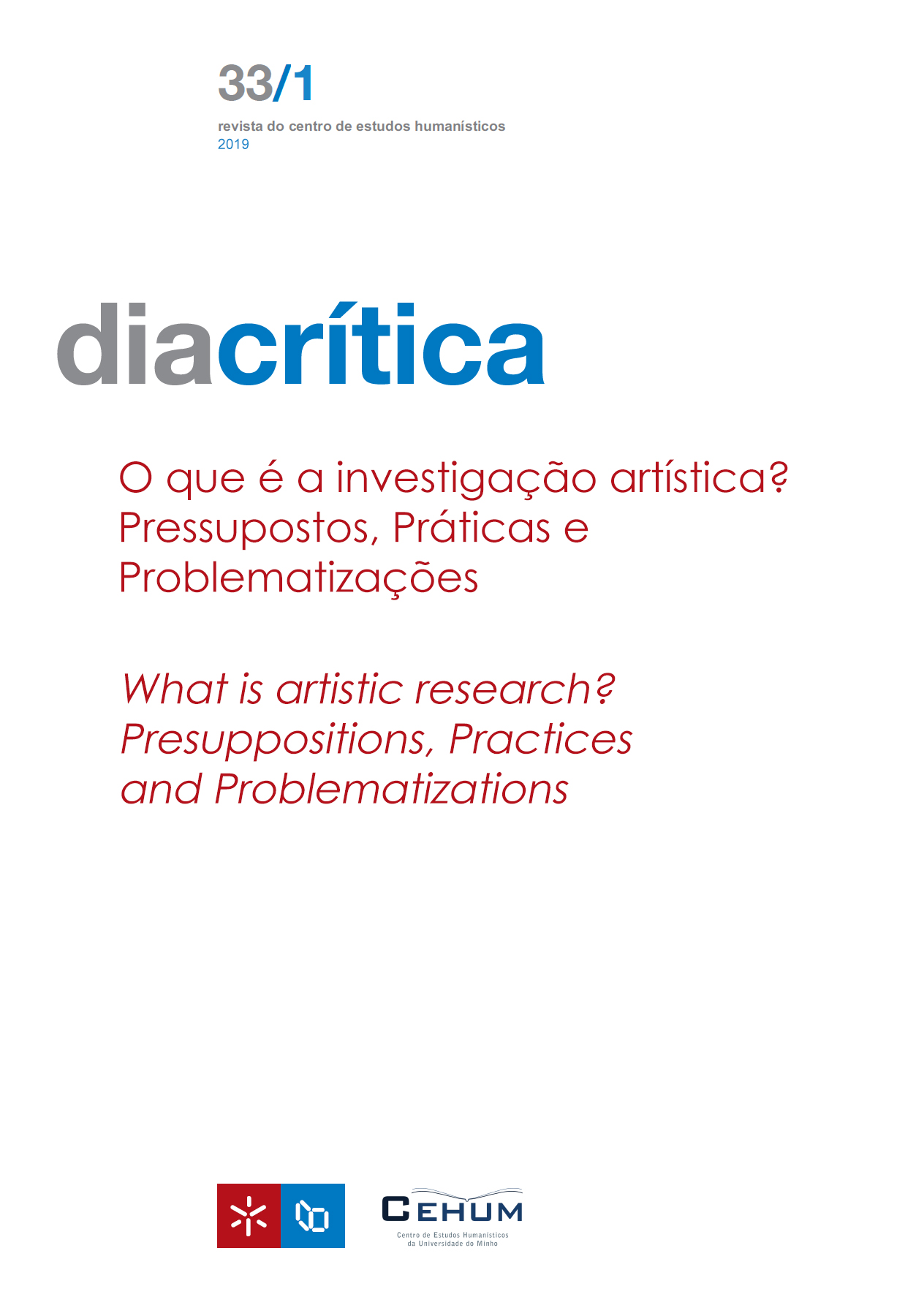Abstinência de Purpurina: Practice and research
DOI:
https://doi.org/10.21814/diacritica.5041Keywords:
Autofiction, Practice based research, Collective process, Site specificAbstract
Abstinência de Purpurina is a theatre performance created by coletivo CASA that aims to intertwin artistic research with practice. Since its origin, the project seeked to explore a theoretical thought on stage, as well as to observe and develop in which way it could be integrated in the actress’s body and in her relationship with the audience. The performance establishes a connection with Doubrovsky’s autofiction literary concept as a way to explore three kind of relationships: actress versus character; character versus spectator; spectator versus self. Through this theatrical experience, the theoretical research intended to reveal in which way the actress and the audience would become (or not) vulnerable and reflective by becoming a part of the show. Enabling the multiplication of its interlocutors’ speeches, Abstinência de Purpurina was designed and developed with a specific focus on a collective process. The coletivo CASA also constructed the play and the scenery while trying to explore the applicability of the fluctuating hierarchy concept. Trying to fit itself in the reality of the contemporary Portuguese theatre, this practical research incorporated the notion of site specific, whereas uncovering spatial alternatives that reconciled the aesthetic and plastic vision of the show.
References
Busch, K. (2009). Artistic Research and the Poetics of Knowledge.Arts & Research –A Journal of Ideas, Contexts and Methods, 2(2), 1–7.
Faísco, C.Abstinência de Purpurina[texto não publicado]
Fischer-Lichte. E.(1997). Discovering the Spectator.InE. Fischer-Lichte(Ed.), TheShow and the Gaze of Theatre –A European Perspective(pp. 41–60). Iowa City: University of Iowa Press.
Fischer-Lichte. E.(2005). A Cultura como Performance –desenvolver um conceito.Trad. de M.Helena Serôdio, Revista Sinais de Cena,4, 73–80. Porto: Campo das Letras. DOI: https://doi.org/10.51427/cet.sdc.2005.0043
Fischer-Lichte. E.(2013). Realidade e Ficção no Teatro Contemporâneo. M.Borja(Trad.),Sala Preta-PPGAC, 13(2),14–32. Disponível em: <http://www.revistas.usp.br/salapreta/article/view/69073>.Consultado em:12 out.2017. DOI: https://doi.org/10.11606/issn.2238-3867.v13i2p14-32
Heddon, D. (2007).Autobiography and performance: Performing selves. Macmillan International Higher Education. DOI: https://doi.org/10.5040/9781350390003
Lehmann, Hans-Thies. (2017). O Teatro Pós-dramático. Trad. deM.Gomes &S. Seruya. Lisboa: Orfeu Negro.
Lesage, D. (2009).Who’s afraid of artistic research? On measuring artistic research output1.Arts & Research –A Journal of Ideas, Contexts and Methods, 2(2).
Lopes, J. T. (1997). Os públicos do Teatro e a Inocência dos Criadores.Observatório das Atividades Culturais, OBS, nº 2 (outubro de 1997), 15–19. Disponível em: .Consultado em:28 jan.2018.
Rancière, J. (2010). O Espectador Emancipado. J.Miranda Justo(Trad.).In J. Rancière(Ed.), O Espectador Emancipado(pp. 5–36). Lisboa: Orfeu Negro.
Downloads
Published
How to Cite
Issue
Section
License
Copyright (c) 2023 Cátia Faísco, Roberta Preussler

This work is licensed under a Creative Commons Attribution-NonCommercial 4.0 International License.










